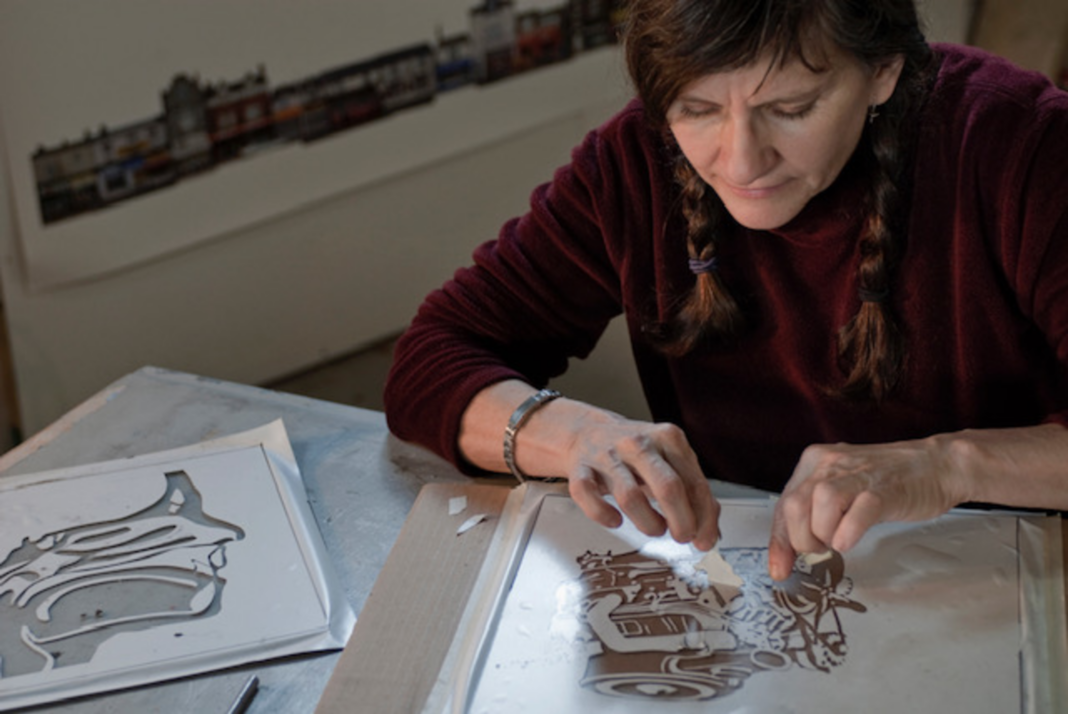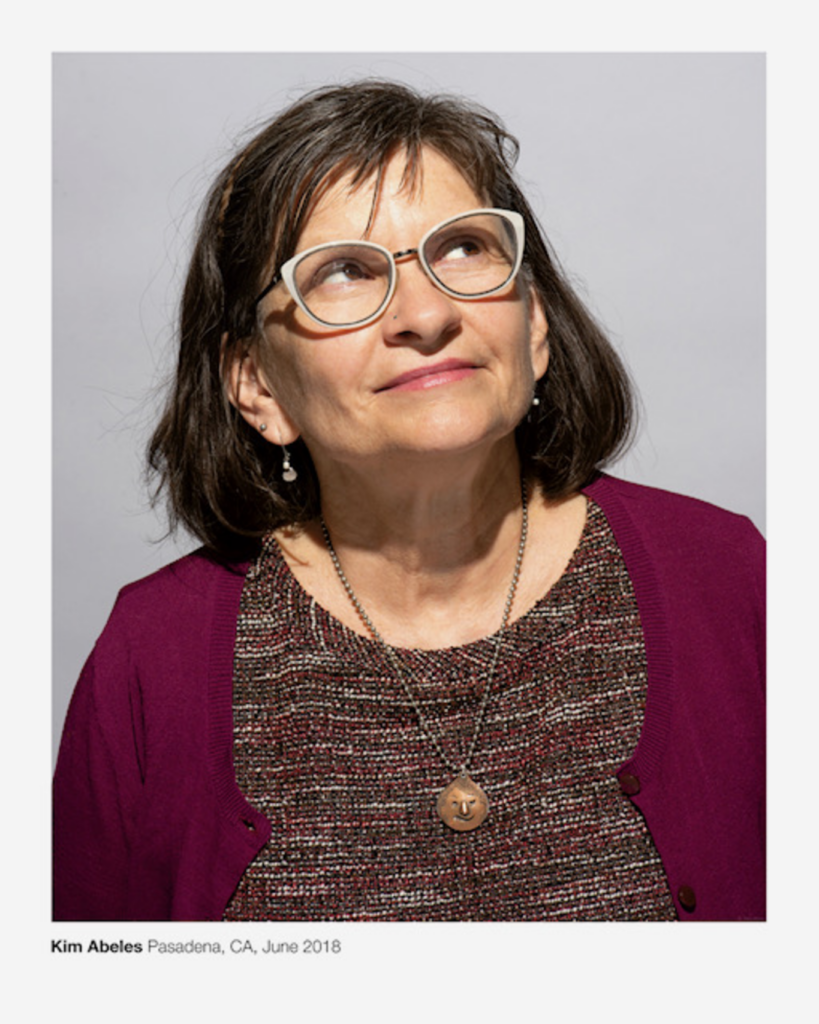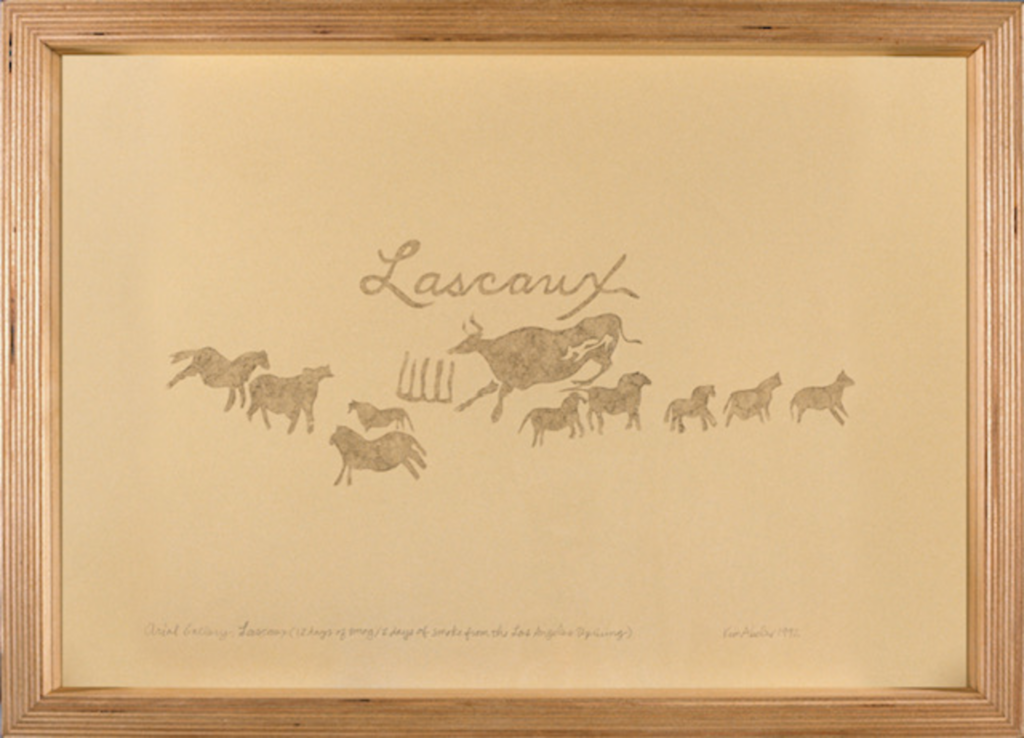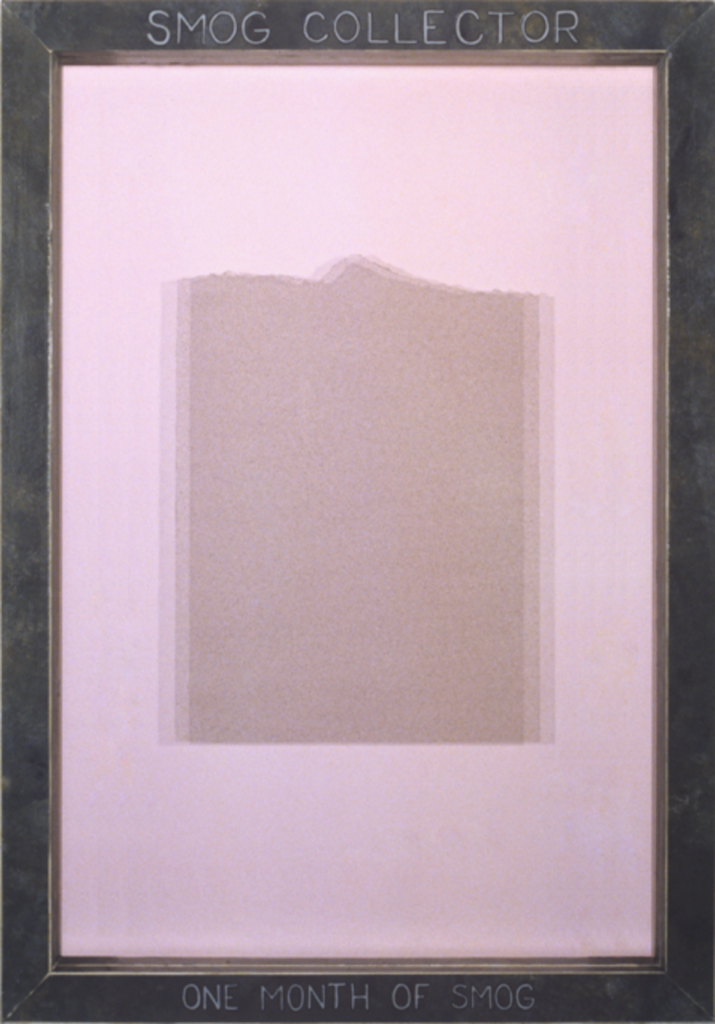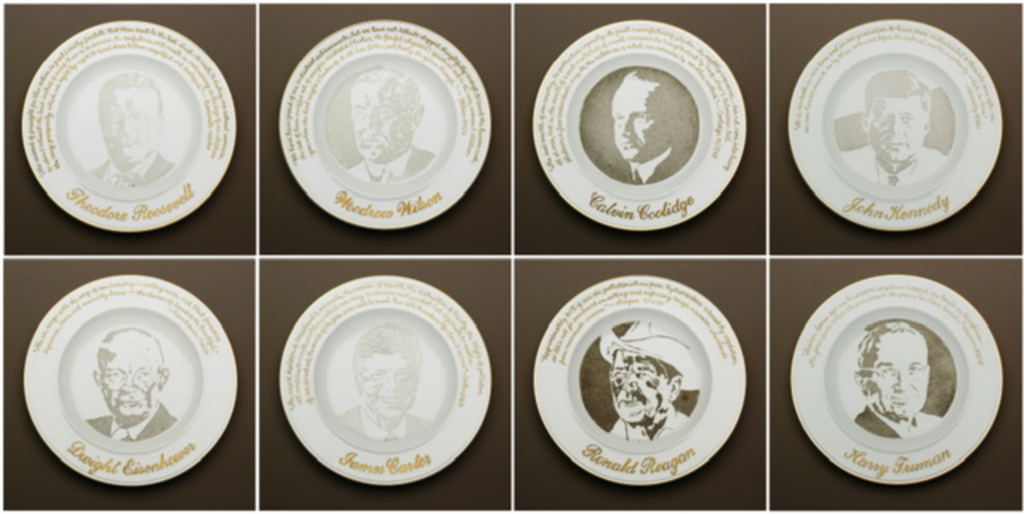With her Smog Collectors series, the L.A.-based artist makes a statement about the air we breathe.
Kim Abeles is a Los Angeles-based artist known for Smog Collectors, a series of works she creates by placing stencils on rooftops, where they gather smog. The series dates back to 1987 and depicts everything from U.S. presidents to the Lascaux Cave Paintings. Bluedot’s Lily Olsen spoke with Abeles about her process, her inspiration and her activism.
Lily Olsen: What is your origin story as an artist, and what inspired you to engage with environmental topics in your art?
Kim Abeles: Even as a teenager, I found artmaking to be the effective way to chart ideas. As a visual thinker, juxtapositions—combining data, observations, concerns, and questions with form, color, and media—offered a space to grapple with reason through imagination.
When I got to Los Angeles in 1978, it placed me in the middle of the smog. The buildings stained with soot felt familiar because I grew up in Pittsburgh at a time when the steel mills still operated. In Los Angeles, I frequently complained about the way the air ached in my lungs, left a metal taste in my mouth, and attacked my skin with its microscopic particulates. I would argue with people in coffee shops about the smog, and they were insistent it was fog. Years later when artists in our building filed complaints against a local factory spewing formaldehyde, I saw that legal processes are valuable but slow, and that art would be an effective way to bring issues about pollution to the forefront.
LO: What is your methodology for the works in Smog Collectors?
I place cut, stenciled images on transparent or opaque plates or fabric, then leave these on rooftops and let the particulate matter in the heavy air fall upon them. After a period, from four days to a month typically, the stencil is removed, and the image is revealed in smog. To quote a stranger who saw my first experiments, they are “footprints of the sky.”
– Kim Abeles
KA: The Smog Collectors materialize the reality of the air we breathe. I place cut, stenciled images on transparent or opaque plates or fabric, then leave these on rooftops and let the particulate matter in the heavy air fall upon them. After a period, from four days to a month typically, the stencil is removed, and the image is revealed in smog. To quote a stranger who saw my first experiments, they are “footprints of the sky.” Since the worst in our air can’t be seen, Smog Collectors are both literal and metaphoric depictions of the current conditions of our life source.
LO: You’ve been working on this collection since 1987. What inspired it in the first place?
KA: The first Smog Collectors piece, in 1987, was an experiment: an image of a slice of the San Gabriel Mountains wedged visually between the buildings of South Broadway’s horizon. That view to the “Mountain Wedge” was my North Star, and from the fire escape at the Victor Clothing Building, I photographed it for 14 months trying to get a clear view unobscured by the particulate matter loitering in the air. Later, on a first-stage smog alert day, I walked to the mountain, as the crow flies.
If I had to cut through yards and houses, I sometimes knocked on the door to ask permission. I climbed barbed wire fences, fell down dusty cliffs, under freeways, and past dogs barking and grabbing my pants. Kids followed me as if I was the Piper, and in other neighborhoods they told me I wasn’t safe walking alone. By the time I was finished, I had walked for about ten hours. The Mountain Wedge was not clearly visible until I stood at its base.
LO: Could you tell me about some of your more recent works in this collection?
KA: Subjects for the Smog Collectors have included the cave paintings of Lascaux, images of the body, industry and to-scale translations of historical American landscape painting, and photography.
World Leaders in Smog presents portraits of officials in smog with quotes from speeches presented at international climate summits. Pollution emphasizes the connection between our choices as individuals and as nations. This series of portrait plates was presented in the 2019 exhibit “The Coming World: Ecology as the New Politics 2030-2100,” in Moscow at the Garage Museum of Contemporary Art. Later that year, World Leaders in Smog was on view at the Chicago Expo.
LO: Can you tell me about the Presidential Commemorative Smog Plates? What inspired this project?
KA: Presidential Commemorative Smog Plates have been on view continually both in the U.S. and abroad since they were created in 1992, most recently this year at the United Nations Headquarters in the show “Re-connections: In Kinship with Nature.” The series includes the presidents’ portraits in smog and their quotes about pollution and industry. The stencils were placed on a rooftop for an amount of time reflective of the president’s environmental records, from four to forty days, longer for the least environmentally conscious presidents, thus showing more accumulation of smog.
The idea developed when I heard George H.W. Bush on the radio proclaiming himself as the “Environmental President.” My immediate reaction was to feel the contradiction between the words and the reality of the air surrounding me.
LO: Is there one piece you've worked on that had a particular effect on you?
KA: I am most grateful for the Smog Collector that was placed in the London garden of Rosamund Adoo Kissi Debrah. In 2013, Rosamund’s 9-year old daughter, Ella Roberta, died from an asthma attack. Understanding that Ella’s health had been severely impacted by the environment, her mother insisted that the coroner include on her death certificate that the cause of death was air pollution. She created the Ella Roberta Family Foundation to promote open discussion about air pollution's connection to health, to educate, and to pressure politicians from a grass-roots position.
LO: What role does activism play in this collection and in your artistic ethos?
KA: Community-based artworks and workshops have been an important part of my creative direction. My goal is always to listen closely to the participants in the projects, and our specific interactions enable a one-of-a-kind outcome. I organize exhibitions for a related reason: Complex topics require multiple voices. In 2023, I curated the exhibition Blue Hour: Above & Below [on view at Kellogg University Art Gallery at Cal Poly Pomona through March 21] to reference the land and sky, as well as the sea’s surface and below. Human interaction is visible in all those locations, and each affects the other.
LO: What do you hope viewers of your art walk away thinking or feeling?
KA: When I started creating environmental artworks in the early 1980s, the projects could serve to present the harms of pollution and the way smog was seen as someone else’s problem—at a distance, over there. I’ve worked on citywide Smog Collector projects with the Bureau of Automotive Repair, numerous schools, science and natural history museums, and environmental and community groups. Forty years later, climate change is in the media and discussions daily, and art has played an important role in communicating the issues.
Your question is more specific, so it leads me to imagine the viewer as they approach one of the Smog Collectors for the first time. I’ve seen how their expression changes when they discover they are looking at an image made of the air they breathe. Art allows this emotive and cognitive response. This experience through the art is best made in tandem with access to solutions for improving an individual’s lifestyle—avoiding meat, riding mass transit, and evaluating the throw-away lifestyle, for instance. Our singular actions toward a healthy environment must be reflected in community leadership and the messaging that floats into our daily sphere. The processes of art open our understanding by prompting and clarifying. As an artist, one goes through a metamorphosis. The viewer is the recipient of the result, and in turn, empowered to be an active agent of that focused energy.


